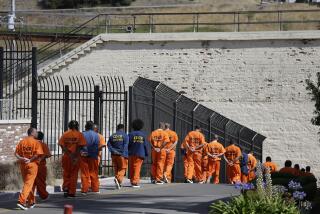Opinion: Good news: Effort to speed up California’s death penalty delayed

Amid great fanfare this year, a prominent group of California politicos — including former Gov. Pete Wilson and Gray Davis — threw their support behind a fall 2014 ballot initiative that would have amended the state Constitution to speed up executions. Organizers announced late last week, though, that they were pushing the effort back to the 2016 election to give themselves more time to raise money and collect signatures — which is political shorthand for the effort failed to gain enough support.
They should drop it altogether. As I’ve written before, the death penalty does not belong in a civilized society. Convicted killers should be separated from the rest of us to live out their lives in whatever minimal conditions pass constitutional muster. But as a society, if we think killing is wrong, we should not sanction the act by our government. That is nothing more than giving in to the impulse for revenge, not justice. We should join the bulk of the industrialized world and scrap the barbaric practice.
The proposed ballot measure, though, sought to speed up that process. Among other things, it would have amended the state Constitution to put a five-year cap on the appeals process, limited the number of petitions that could be filed, expanded the pool of available lawyers to handle death penalty cases (that is a good idea) but also removed regulatory controls over how the state devises its lethal-injection protocol. That last bit was a bad idea, but it provides an opportunity to look at the status of California’s efforts to reform its death penalty protocol.
It is nowhere.
In July, Gov. Jerry Brown announced that he would no longer appeal a 2010 court ruling that said the state had failed to follow proper procedures in devising a new three-drug lethal-injection protocol aimed at addressing an earlier court ruling. That decision found the execution method left open the possibility of inhumane suffering by the condemned, and thus was a potential violation of the constitutional ban on cruel and unusual punishment. Jeffrey Callison, spokesman for the state Department of Corrections and Rehabilitation, said recently that it was still devising a single-drug protocol but that there was no time line for completing the process.
If the state is going to continue down this road, it should at least look to the recent examples out of Oklahoma and Ohio, and the legal fights there as well as in Missouri and Texas, as it figures out what to do. It should ensure that the process is transparent, from the selection of the drug to be used to the place where it is manufactured. The condemned have a due process right to know whether they have an argument that the execution drug could violate the cruel and unusual punishment protection.
But taking a step back, and as our colleague Maura Dolan reported last year, the reality is that it will probably be years before the state can devise new regulations, have them vetted by the courts, survive inevitable legal challenges and then procure the new drug in an environment in which pharmaceutical companies decline to provide the drugs to prisons that will use them for executions. Ultimately, the state may have to get into the drug-making business just to ensure a supply is available.
The best solution? Just ban the practice. We came close two years ago when a ballot initiative to abolish executions failed with 48% of the vote; a new run at it might do better were it to come up again, especially given the botched executions this year in Ohio and Oklahoma. California should join the other 18 states that have abolished the death penalty and instead devise a more pragmatic, cheaper and morally defensible way to deal with those convicted of murder. The killers don’t belong in society; they shouldn’t be coddled; but they also shouldn’t be killed by their government.
More to Read
A cure for the common opinion
Get thought-provoking perspectives with our weekly newsletter.
You may occasionally receive promotional content from the Los Angeles Times.







